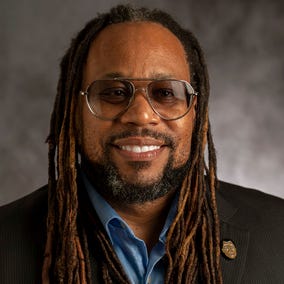
ST. PAUL, Minn. - Determined to find new housing for her and her son, LaVera Jeffrie had two options.
Each would propel her down an entirely different path.
The single mother had signed up for the Twin Cities Habitat for Humanity program. It gave her a chance to own a home, but with the challenge of paying a 30-year fixed mortgage, plus property taxes and all the expenses — planned and unplanned — that come with ownership.
She also had been accepted into the federal Section 8 Housing program, seen by some low-income families as winning the housing lottery. The program offers taxpayer-funded vouchers aimed at covering most, if not all, rental costs in a house or apartment.
Jeffrie, 34, had lived in a public housing complex for a decade. She had seen families become dependent on subsidized housing and allow units they did not own to fall into disrepair. Still, Section 8 offered security — a place she could always afford to live in.
While making her decision, Jeffrie said she remembered her grandparents’ home on Chicago’s south side. They owned the three-story brick house throughout their 50-year marriage. It was the family hub, the place where Jeffrie felt safest as a child. At times, she had lived there.
Jeffrie had also seen her parents' generation struggle to inherit that dream of homeownership as the abundant urban manufacturing jobs that had lured her grandparents from the South in the Great Migration vanished.
She thought of her son, Matthias, her “little man.” She wanted to provide him a good school, a safe home, a promising future.
Jeffrie chose the less-traveled path.
“Choosing Habitat was the best decision I’ve ever made," she said. "I know some people would have chosen Section 8, and I’m not knocking it. But I wanted something better for me and my son."
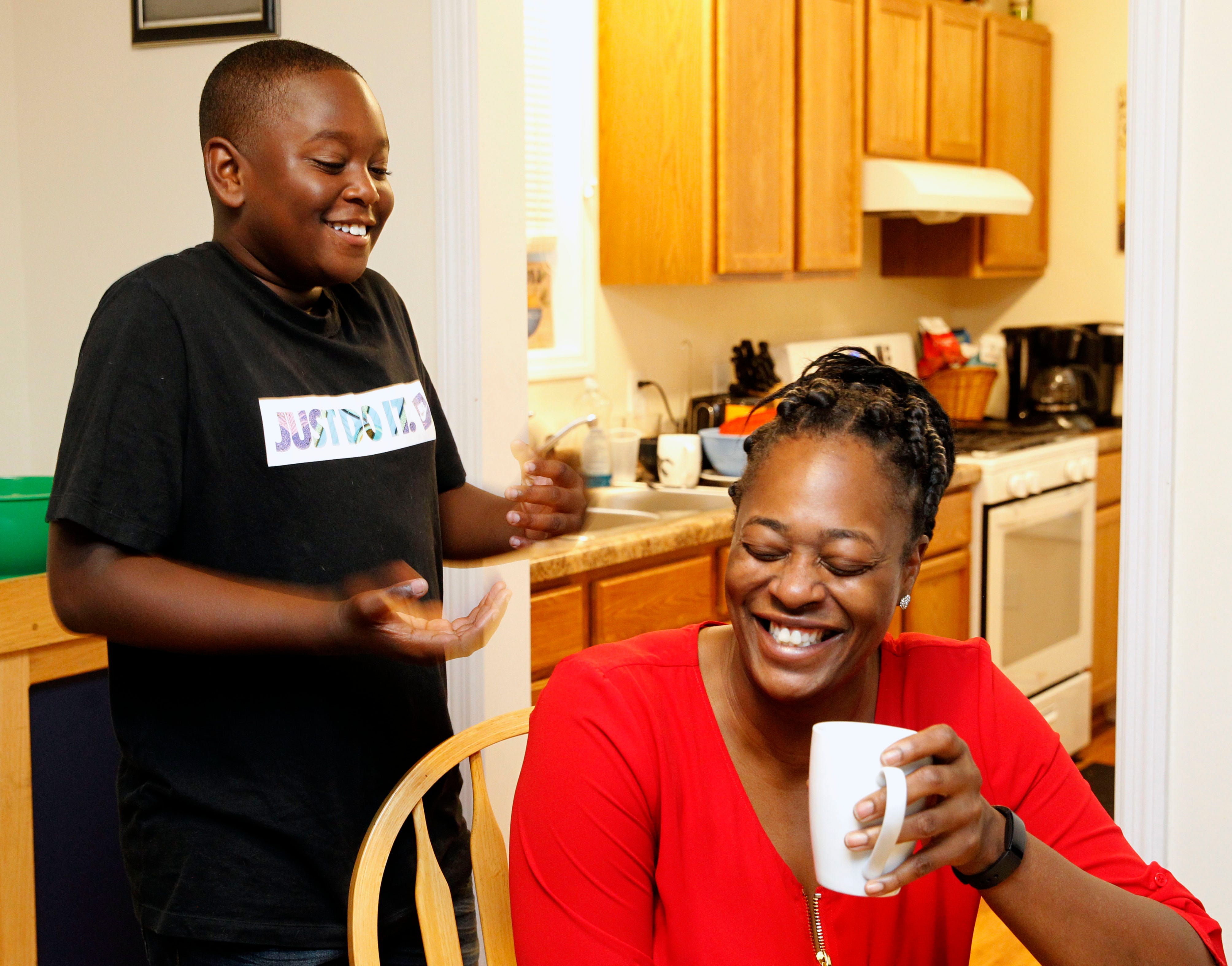
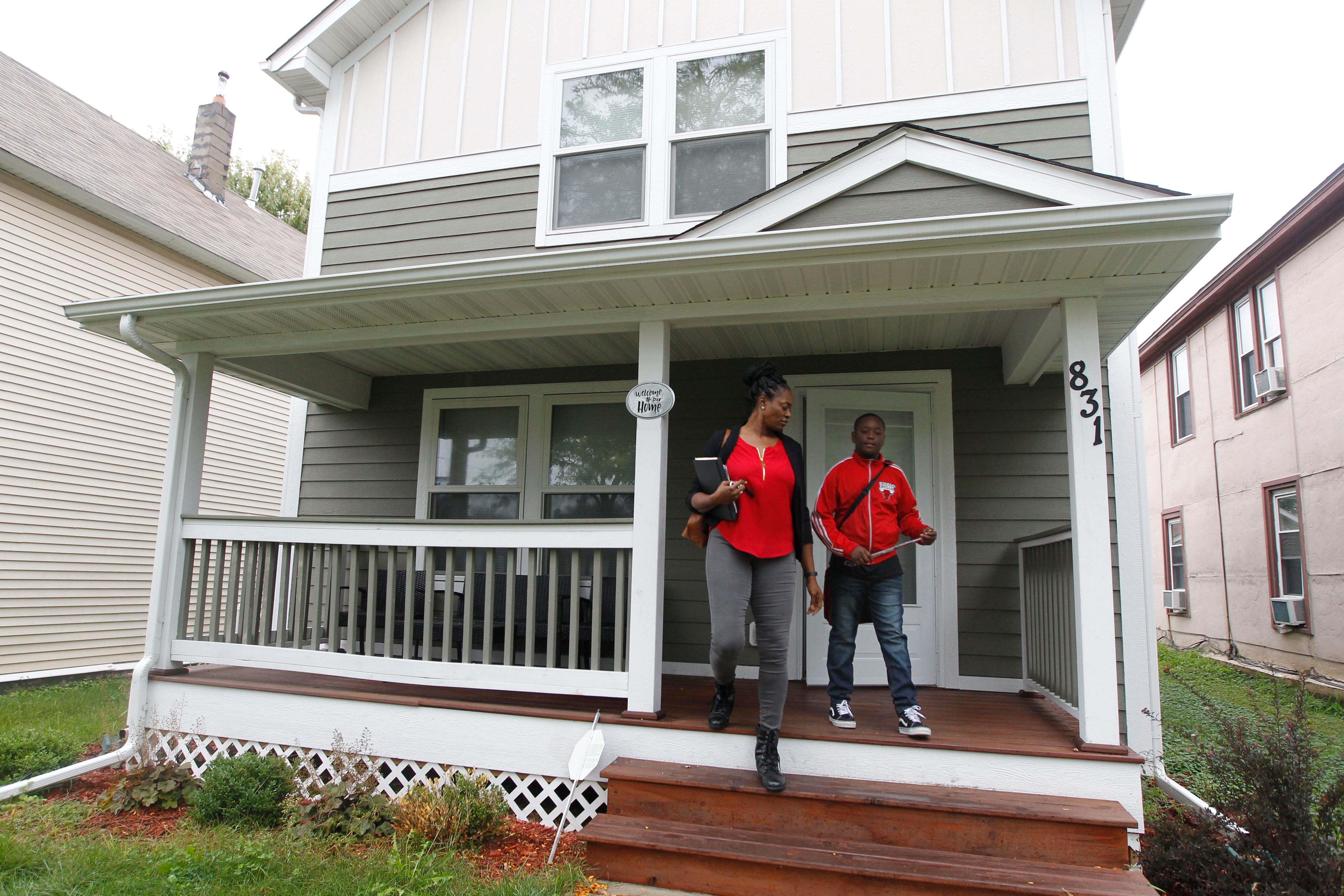
Owning a home has long been the primary gateway to stable, middle-class family life in America. Public policies support and reward it; the tax deductibility of interest on home loans is, in a sense, government sponsorship. As owners build equity through the years, they can finance other steps forward, such as college education for their children. And homes typically rise in value, building security into retirement.
But many Black families have been excluded from the American Dream of homeownership and equity building — both explicitly and implicitly. Think of the huge growth in homeownership and family wealth across America in the decades following World War II. The Servicemen's Readjustment Act, commonly known as the GI Bill, ushered in a housing boom that transformed the nation.
However, huge numbers of African Americans who served their country found themselves unable to take part. The Department of Veterans Affairs could co-sign home loans — but not actually guarantee them. That left room for financial institutions to refuse mortgages and loans to Blacks.
They also continued to "redline" entire neighborhoods, a practice endorsed by the federal government since before World War II that used race to determine creditworthiness and investment risk. Areas deemed unworthy were shaded red, making it all but impossible for residents in them to secure loan assistance and insurance. At the same time, white borrowers in other neighborhoods received loans even if they had lower incomes.
What's more, sellers steered Black families looking to buy homes away from white neighborhoods, many of which even had covenants that forbade African Americans from moving in. Wauwatosa, for example, is just one suburb where many property deeds forbade non-white homeownership until the Civil Rights era.
Such brazen discrimination is not a relic. The Fair Housing Act of 1968 made racial discrimination in housing transactions illegal, but it has delivered modestly on its promise to promote integration and equity in homeownership.
Consider the $200 million settlement of a lawsuit filed by the U.S. Department of Housing and Urban Development against Wisconsin-based Associated Bank, alleging loan discrimination against African American and Latino applicants. It was the largest redlining settlement ever won by HUD. It happened in 2015.
That same year, the Obama administration promulgated the Affirmatively Furthering Fair Housing Rule, which required communities receiving federal housing and urban development funds to examine whether they continue to have barriers to fair housing.
But last month, on July 29, President Donald Trump tweeted that suburban Americans would not have to worry about low-income housing coming to their neighborhoods.
"I am happy to inform all of the people living their Suburban Lifestyle Dream that you will no longer be bothered or financially hurt by having low income housing built in your neighborhood," the president tweeted.
He added: "Your housing prices will go up based on the market, and crime will go down, I have rescinded the Obama-Biden AFFH Rule. Enjoy!"
The racial undertones of his message were unmistakable.
Against the backdrop of those national tides, Milwaukee has a unique story. No city fell as far and as fast because of economic globalization and the demise of American manufacturing.
In 1970, 33% of Black households in Milwaukee lived in homes they owned. Major urban manufacturers like A.O. Smith, Schlitz Brewing Co. and Allis Chalmers recruited and welcomed Black laborers from Mississippi, Alabama and across the South.
"Most of the men from that era came to places like Milwaukee to work," said Clayborn Benson, a genealogist and founder of the Wisconsin Black Historical Society Museum. "They wanted their children to receive a great education and, in making that sacrifice, they did the hardest, dirtiest jobs for little pay."
In subsequent decades, when those jobs disintegrated, the stability of many families that depended on them crumbled as well.
Some, of course, were able to buy homes — and to start building wealth that can be passed on to the next generation.
But thanks to white flight from city neighborhoods, and the restrictions on where people of color were welcome to live, the value of homes owned by Black families did not grow at the same rate of those owned by white families — if they grew at all.
"It's a gap that has never closed both in housing and education," Benson said. "So the battles we were fighting even during WWII are still prevalent today."
The consequences of that gap repeat themselves across generations. A study by Harvard and Stanford universities found that children who moved at a younger age to more affluent neighborhoods with stable housing saw their earnings as an adult increase by 31%. The 2016 study, found that for every extra year a child spends in a better environment, the prospects of higher earnings increase significantly.
In the four-county metro area, the Black homeownership rate stands at 27.4%, compared to 70% for whites, according to U.S. Census data. That means nearly three out of four Black families do not own the home they live in, while nearly three out of four white families do. It's one of the nation's largest racial disparities in homeownership rates, and the gap barely narrows even just looking at the city of Milwaukee.
In other words, we've gone backward in the last 50 years.

Not surprisingly, related measures are grim. Newly-released research from the University of Wisconsin-Milwaukee shows Milwaukee ranks near the bottom of the nation’s cities for percentage of African Americans earning $40,000 or more a year.
From 2014 to 2018, only 17.4% of Black men and 14.6% of Black women in the four-county Milwaukee area made more than $40,000, according to the July report. That compares to 46.3% of white men and 29.1% of white women in the metro area.
Today, 26% of Milwaukee's Black residents live in neighborhoods defined as having concentrated poverty compared to 10% of the area’s poor white non-Hispanic residents. Only Cleveland, Detroit and Buffalo, New York, fare worse in terms of the gap.
Efforts continue to be made to improve homeownership opportunities in the city. But at times those uncoordinated programs look as if different contractors are working on different parts of different houses, with no foreman or master plan.
A new report from the Wisconsin Policy Forum, released July 15, tallied more than 20 programs divided across three city agencies — but no housing director. It called for "stronger organization and clearer leadership" in improving housing for low-income families.
In addition to the government agencies, more than a dozen nonprofit groups work on affordable housing issues, from building new homes and providing forgivable loans to teaching financial literacy and credit counseling.
"Would things be better if people and groups worked together? Yes, it would, we all know that," said Howard Fuller, a civil rights activist and education reform advocate.
"But keep in mind that these programs can only do so much, because everything is tied to jobs," he said. "These housing programs, for all the good they do, can't get people livable wage jobs where there are none."
He's right. All it takes is one look at the desolate former A.O. Smith site on the city's northwest side to drive home the point.
"Things are worse today for Blacks in homeownership than they were 50 years ago," Fuller said. "Tell me what you see on the horizon that would convince me that things are going to get better in the next 50 years."
LaVera Jeffrie’s grandparents bought their first home in 1966.
Nathaniel Jeffrie coached baseball and worked in other community outreach programs for the Chicago Park District. His wife LaVera worked for the U.S. Postal Service, starting as a mail carrier and retiring from a management position in the early 2000s.
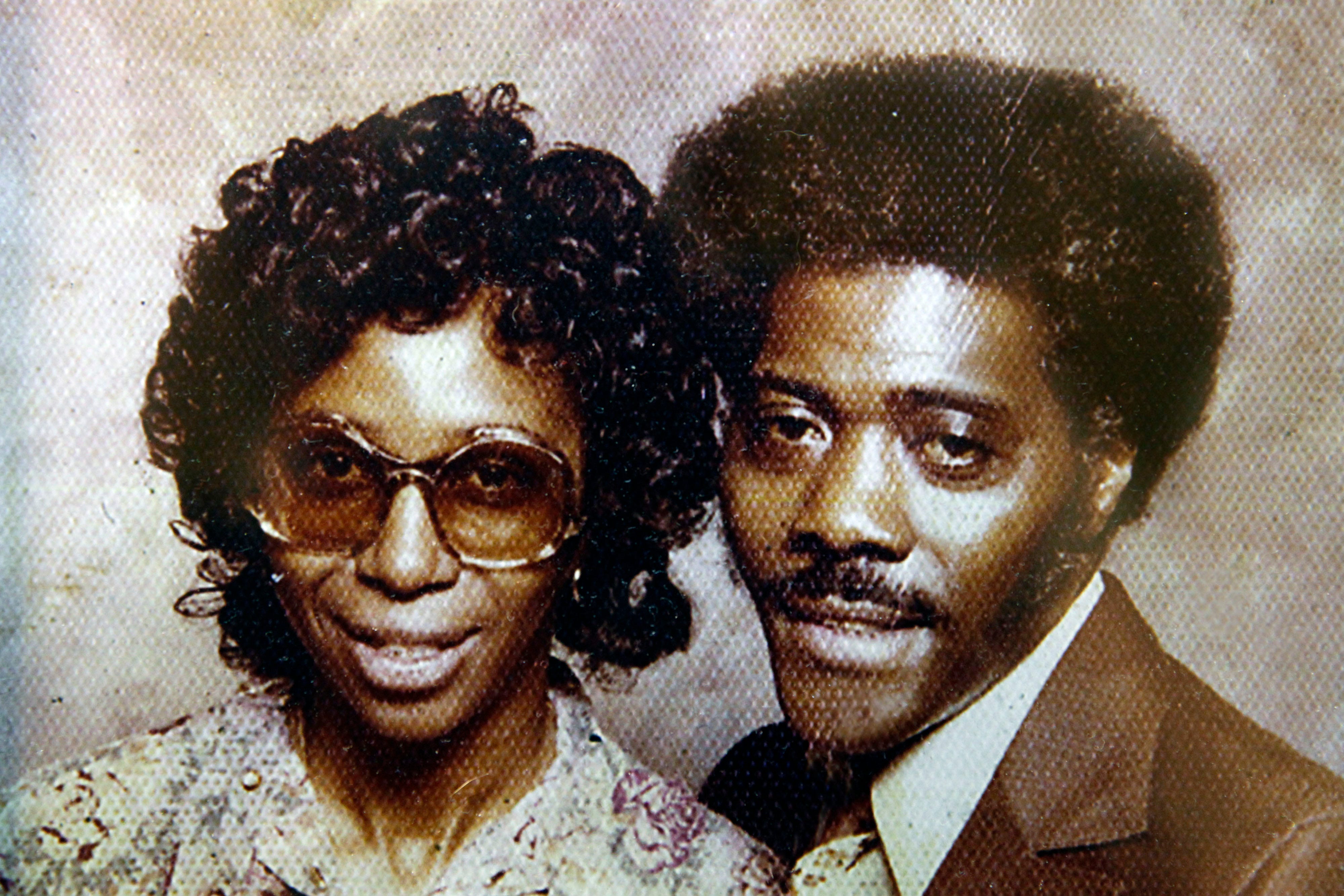
Their home served as the gathering spot for family get-togethers on Thanksgiving and Christmas. During the summer, Saturday cookouts were boisterous family affairs, with games of tag and even dance contests held in the big backyard.
In 1995, when Jeffrie was 10, her mother and stepfather decided to move 350 miles northwest to St. Paul for a fresh start. They wanted higher paying jobs for themselves and better schools for the three children in their blended family.
The family started out in a two-bedroom apartment in St. Paul, but soon moved into St. Paul Public Housing, which provided rent support, so they never paid more than 30% of their income to keep a roof over their heads.
Jeffrie attended Highland Park High School, a school recognized for high academic achievement. At 6-foot-3 inches, she starred on the basketball team.
“This is what my mother envisioned for me when they made the decision to move," she said. "She wanted us to get the most out of our education, so we could have better opportunities.”

She graduated in 2004, enrolled at Minneapolis Community and Technical College and planned to pursue a career in the nonprofit sector, hoping ultimately to open a homeless shelter for women.
By that time, Jeffrie’s mother had quit her job as a bank teller to start an in-home day care center. She wanted to care for the children of single mothers so they could finish high school and college. “My mom made it possible for a lot of young ladies to go back to school to better themselves,” Jeffrie said.
With a booming day care business, and Jeffrie and her two younger siblings still living at home, living space became tight.
In 2005, Jeffrie’s mother urged her to apply for public housing.
“I didn’t take offense to it. I have a great relationship with my mom, but she was thinking about how some people end up on the public housing list for years,” Jeffrie said. “She just wanted me to start thinking ahead to what I was going to do.”
In May 2005, still an 18-year-old freshman, Jeffrie received an acceptance letter for St. Paul Public Housing and moved into her own apartment a month later.
Two years later, she became pregnant, and for the first 10 years of Matthias' life, home was a two-bedroom residence at McDonough Townhome Apartments. Jeffrie declined to talk about Matthias' father.
There was no big backyard for cookouts. No games of freeze tag or dance contests. And no dog, because the housing unit did not allow them.
The Twin Cities Habitat for Humanity program takes a comprehensive approach to tackling affordable housing, covering the entire metropolitan area of seven counties. It moved to a regional approach more than 20 years ago. The seven counties it serves have a combined population of more than 3 million people — more than half the population of Wisconsin.
The size of Twin Cities Habitat enables it to be a major player on multiple fronts. It can build houses from the ground up; buy existing move-in-ready homes; or purchase homes that may need rehab, do the repairs and then sell them at an affordable price.
It also makes it easier to get volunteers and funding from large corporations and individuals, to leverage its size to buy materials at a cheaper rate and to win better deals with banks.
A 2017 partnership with Bremer Bank allows the bank to purchase up to 500 below-market Habitat mortgages over a four-year period. That doubled the number of families who can buy homes with Habitat in a given year from about 50 to more than 100.
About half the homes are located in Minneapolis or St. Paul, with the other half in the suburbs.

Once low-income home buyers are accepted into the Twin Cities program, they get to choose where they want to live, allowing them to move into an urban or suburban area, and take into account factors such as public transportation, school districts, jobs and recreation opportunities.
For the fiscal year ending June 30, Twin Cities Habitat helped 105 families close on a home. With COVID-19 construction delays, 10 additional families were able to close in July. Despite the pandemic, the number is still more than double the agency's yield just a few years ago.
"With the nature of the real estate market, sometimes you have to act quickly, and we have the ability to do that," said Chris Coleman, president and CEO of the Twin Cities program.
In contrast, southeast Wisconsin is splintered into seven separate Habitat operations: Milwaukee County, Waukesha County, Racine County, Kenosha County, Washington/Dodge counties, Ozaukee County, and the Lakeside Habitat for Humanity in Sheboygan County.
Across the seven-county area, 89% of Black residents live in Milwaukee County, as do 62% of Latino residents, according to 2019 U.S. Census estimates.
There has been no talk of merging the Habitats into one force here. Such an effort would be a heavy lift; it would take years of collaboration and require boards of directors and CEOs to cede power and positions.
Each year, Milwaukee Habitat builds 25 new homes and does five rehabs while the other southeastern Wisconsin affiliates contribute a total of 12 new homes and 11 rehabs.

Milwaukee Habitat's work has exclusively focused on the city's north side, typically in low-income, predominantly Black neighborhoods where low-cost lots or foreclosed homes can be purchased from the city. Those are also neighborhoods where Habitat sees the most need and where donors want to see results.
African Americans make up 80% of the homeowners in Milwaukee Habitat; refugees make up the other 20%.
Rather than building homes where an owner chooses, Milwaukee Habitat attempts to be a catalyst for reinvesting in neighborhoods near their breaking point. It tackles entire blocks, building homes within a tight area. About 75% of its work is on new builds, with 25% on rehabs.
The group aims to build 100 homes and rehabilitate about 150 others over the next four years in the city's Midtown and Harambee neighborhoods, using the block-by-block approach.
“We are a fair-housing lender to anyone who comes to us who fits the guidelines," said Brian Sonderman, executive director of Milwaukee Habitat for Humanity. "But because of the segregation of our city, our program has not been able to serve people who are not African American or refugee. That’s a weakness of our program that we have to change.”

One new way to address that need is the Affordable Mortgage Program, which allows potential buyers to purchase existing homes through the open market throughout Milwaukee County and receive financial education, technical assistance and an affordable mortgage product.
The hope is that this will attract people who are paying too much in rent to take the jump into homeownership and not be forced to move to a specific block in a particular area. In the city of Milwaukee, half of all renters — some 134,000 households — pay more than 30% of their monthly income on housing, crossing the line of what is considered a safe threshold.
According to the City Housing Report, 75% of households earning $20,000 a year or less are spending more than 50% on housing. Some spend as much as 70% of their monthly income on housing, Sonderman said. And often, those units are in disrepair and unsafe neighborhoods.
With help, those renters could be spending that money on mortgage payments, building equity and stability.
Before a single two-by-four was on their St. Paul lot, Jeffrie parked her car at the site and told Matthias: “I think this is it.” She spread out a towel on the ground so the two could imagine what it would become.
“We prayed over the space, and I would say if it’s right for us, then God would let us have it,” she said.
The Habitat program — regardless of location — is not a handout.


Applicants must demonstrate three years of a stable income in order to enter the program and pass credit checks and other scrutiny. Once accepted, participants are required to put in at least 250 hours of volunteer work through building homes or working at the Habitat ReStore.
That sweat equity makes you appreciate the journey, Jeffrie said.
The two moved in on Dec. 31, 2017.
The home provides Matthias, now 13, with a big backyard — like her grandparents’ home from her youth. They finally got a dog, named Leo.
The home is cozy, but has two stories, three bedrooms and one-and-a-half baths. The brown-stained wood porch features a sign that reads: “Welcome to our HOME.” It's in a diverse neighborhood lined with big trees and filled with school-age children. A convenience store and bus line are within easy walking distance.
The median household income of the neighborhood is $51,011— more than $20,000 higher than the neighborhood they left. Following the Harvard-Stanford study, Matthias' prospects for earning a good living as an adult have improved significantly.
“I love this neighborhood because it’s in the middle of everything,” his mother said. “My doctor’s office is within a mile of here. My son’s school is about 10 minutes away, and where I coach my girls’ basketball team is close.”
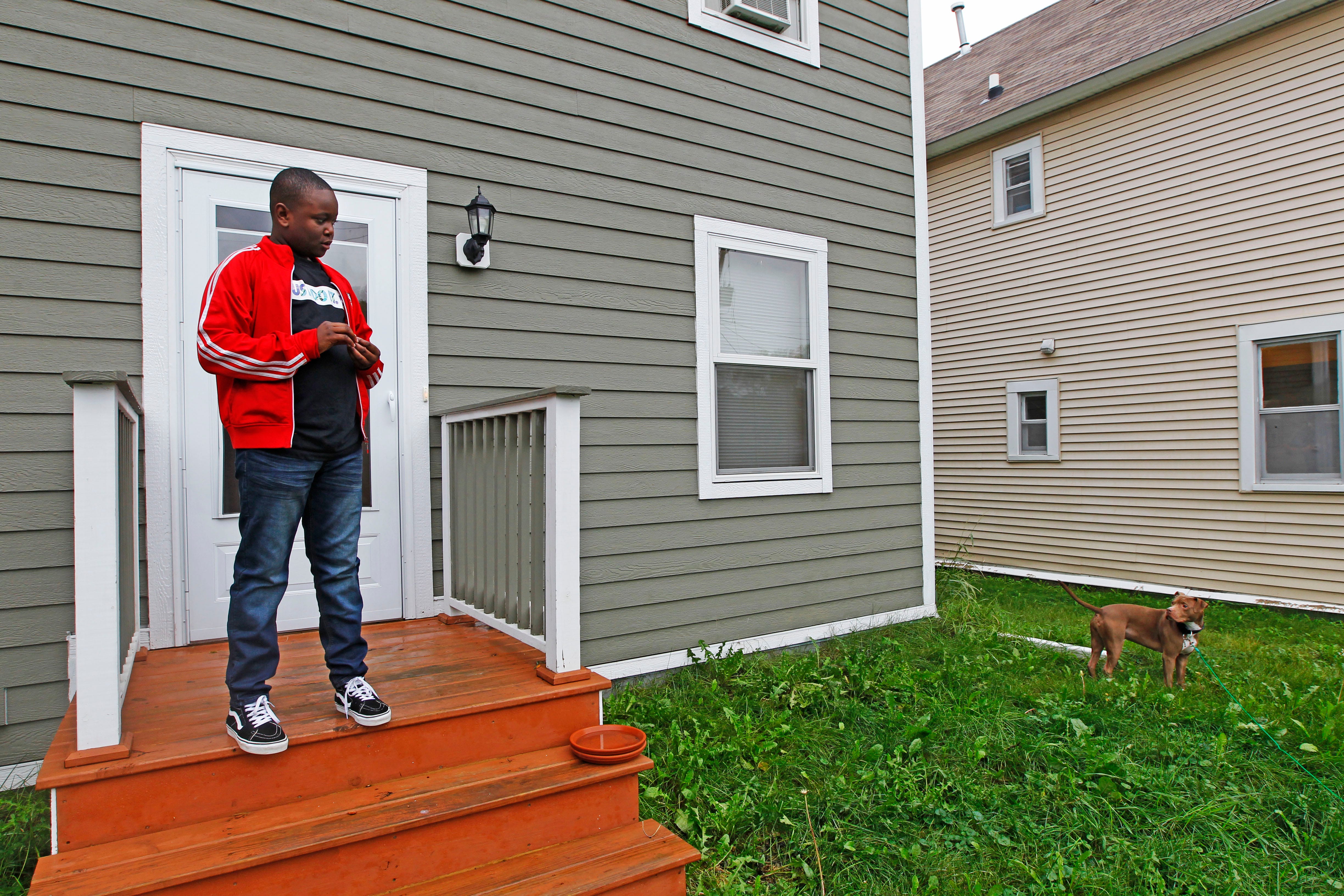
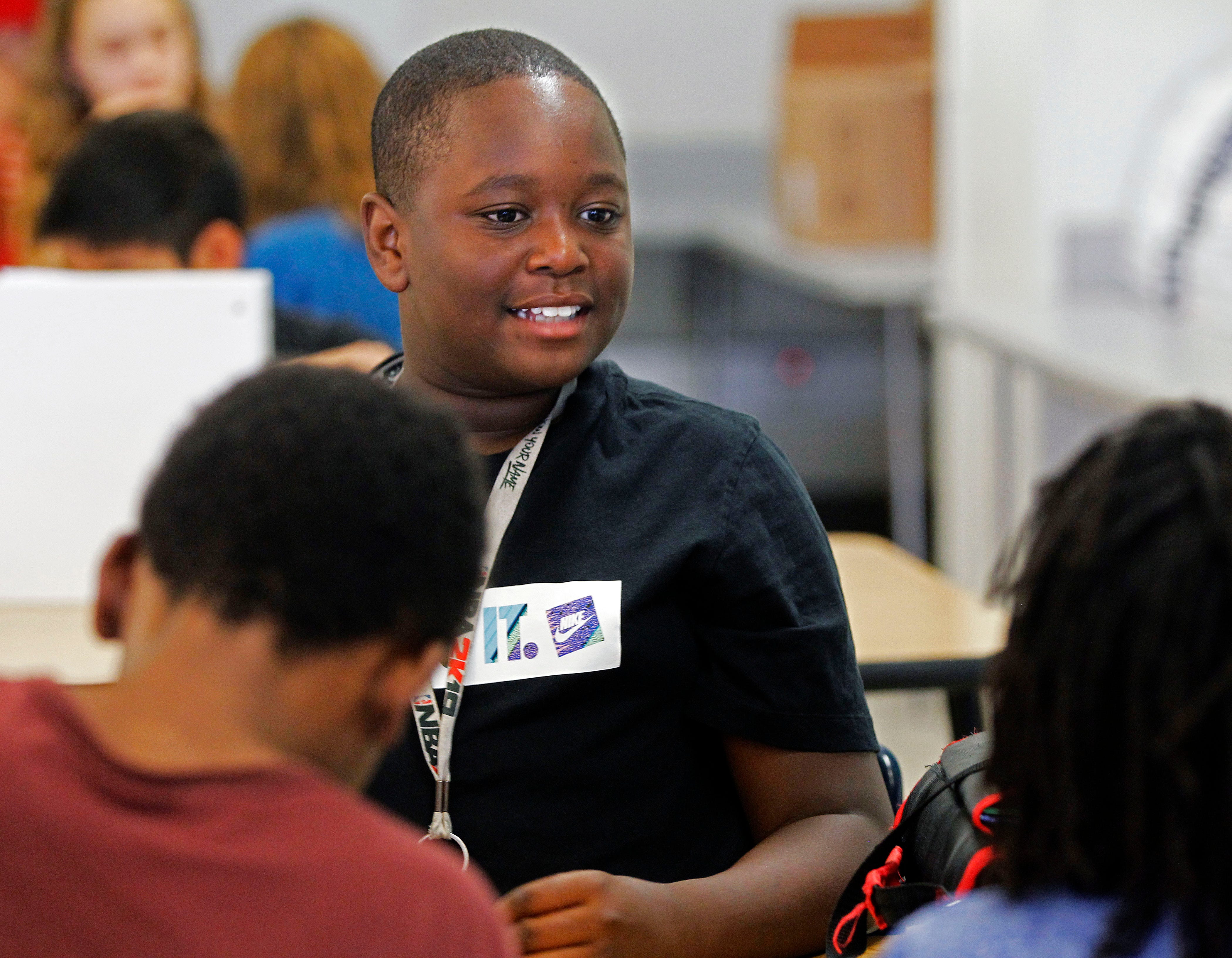
The move allowed Matthias, entering seventh grade this fall, to shift to Capitol Hill Gifted and Talented Magnet School, which the state education department designated a "Rewards School" based on outstanding growth on state assessment tests. The daily attendance rate for the school is 94.6%, which exceeds the Minnesota average of 85.4%. His last school was plagued by high staff turnover; in fifth grade alone, Matthias had five different teachers.
Matthias said he enjoys Capitol Hill because the teachers take time with him.
“In my last school, if I told them I didn’t understand something, it’s like they didn’t care," he said. "They would keep going and then I would fall behind.”
Until recently, Jeffrie worked as a full-time security manager at the Target Center, where she developed security plans for special events and oversaw hiring and firing. She was furloughed during the second week of March due to the COVID-19 outbreak and then laid off July 1.
Jeffrie is unsure if she will be hired back.
Twin Cities Habitat has a mortgage deferment option so homeowners who have lost jobs or income due to COVID can defer their payments and extend the term of their mortgage. They won't have a lump-sum payment due after the deferment period, and Habitat doesn't report the extension to the credit bureaus, to avoid long-lasting harm.
Milwaukee Habitat is also offering mortgage deferment during this time for its homeowners.
One day last fall, Jeffrie picked up her son from school to take him to football practice across town. Matthias has been playing football in the Roseville Community Football League since he was 5.
It was "picture day" and Matthias helped some of his teammates pull their jerseys over their shoulder pads as a photographer took individual shots before the team photo.
As the players were taking the group shot, Jeffrie talked with other moms.
“We have a little network. Some of us own homes and others are about to make that leap,” she said.
As Jeffrie watched her son go through drills, she reflected on what owning a home means to her.
“Single mothers must understand that raising a child on your own without any help doesn’t mean you have to settle for public housing or Section 8 the rest of your life," she said. “There is so much more for you out there if you take advantage of it. But understand it will not be easy because, if it was easy, everybody would have it.”
She paused for a moment.
“No matter what’s going on outside of my home or at work, or at my part-time job, or with my son or his football team, I know that I can go to my home and I can turn the key and turn the lock and once inside this is my safe haven,” she said.
That security also comes with a sense of pride.
Of the 38 grandchildren in her family, she is the first to own a home.
About the Milwaukee's Promise project
Reporter James E. Causey spent the 2019-20 academic year as an O'Brien Fellow in Public Service Journalism at Marquette University, where he was assisted by student researchers Abby Ng, Donna Sarkar and Sebastian Becerra.
Photojournalist Angela Peterson's work was supported by a public service journalism fellowship from the Greater Milwaukee Foundation, which aims to inform and foster civic engagement and rising together to eradicate systemic racism that withholds our region and all people from truly thriving.
All work on the project was done under the guidance of Milwaukee Journal Sentinel editors. Neither Marquette nor the foundation had involvement in decisions about the content or presentation of the work. To support the Journal Sentinel's in-depth local reporting, please subscribe at jsonline.com/deal.
